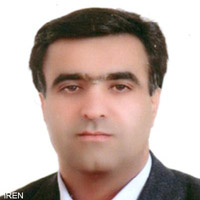Analysis of Water Security Concept in Neyshabour Plain Watershed by Using Human-Environment System (HES) Interaction Framework
The water shortage crisis that is sweeping the globe today has posed serious harm and threat to people around the world. Meanwhile, Iran is one of the water-scarce countries due to its location in the arid and semi-arid belt and fluctuations in rainfall. The water status in most of its regions is in a state of tension and sometimes crisis. The pervasive nature of water and the existence of numerous human and environmental factors affecting its reliability have greatly complicated the interactions between the human-environmental dimensions. Therefore, the study of these complex environmental systems that are affected by human actions is a major scientific challenge. This challenge must bridge the gap between the natural sciences and the social sciences and dominate modeling at different scales. Therefore, there is a need to integrate knowledge from the natural and social sciences. In this regard, the purpose of this study is to analyze the water crisis and the concept of water security by presenting a framework for Human-Environment System (HES) interactions in the Neishabur Plain watershed. In this regard, first, the process of changing the water issue in the Neishabur Plain watershed during 2011-2020 was investigated, and then, according to the identification of the prevailing situation in the watershed, considering the influence of various human and natural factors in the current crisis, to identify the main factors affecting the occurrence of the crisis and determining how they interact and feedback for a comprehensive analysis of the water crisis and the consequences of this water shortage in the region. The results of the investigation of the water issue in the area generally show a decrease in precipitation, warming of the air, increase in evaporation and transpiration, dryness, and more dehydration. This is while the largest volume of water harvesting in the basin (ca. 450 million m3 in the 2019-2020 water year) is also dedicated to the agricultural sector. In addition, the results show that understanding the hierarchical levels of environmental awareness and ultimately learning and practice based on key components and interactions identified by the HES framework, facilitates the analysis of system complexity.
-
Application of Social Cognitive Theory in Modeling Farmers' Behavior to Encourage Them to Choose Low-Water-Demand Cropping Patterns
Amirreza Nasiri, Mahdi Mashhadi, Seyyed Ahmadreza Shahangian, *
Iran Water Resources Research, -
Monitoring Ground Subsidence Based on Differential Synthetic Aperture Radar Interferometry and Changes in Groundwater Level (Case Study: Kermanshah Aquifer)
Mohsen Kazemi, Hassan Khosravi, *, Shahram Khalighi Sigaroodi, Shirin Mohammadkhan
Iranian Journal of Watershed Management Science and Engineering, -
Analysis of Actor Positions and Institutional Conflicts in Water Governance in Khuzestan
Sedigheh Ghafari, Mehdi Ghorbani*, , Ahmad Naderi, Mansur Ghanian, Hossein Azadi
Iranian Journal of Rainwater Catchment Systems, -
Market-based Groundwater Resources Management Considering the Uncertainty of Water Consumption Monitoring
Soroush Sharghi, *, Safoura Safari
Quranic Knowledge Research,



